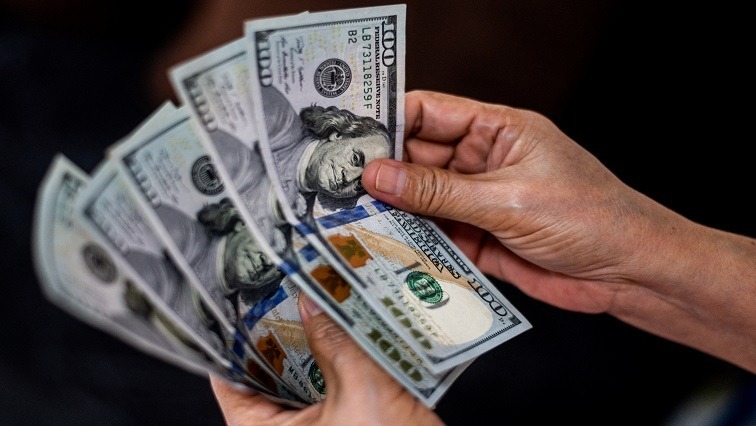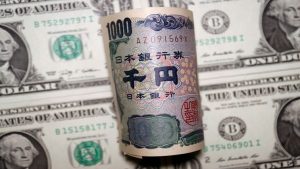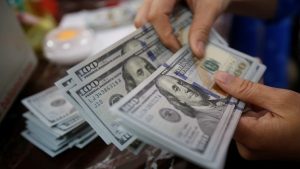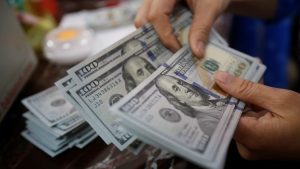The dollar steadied on Monday, holding its biggest weekly gain since 2022, as escalating conflict in the Middle East and the prospect of stubbornly high US interest rates gave support.
The dollar went up 1.6% against a basket of six major currencies last week after a small but unnerving upside surprise in U.S. inflation cast doubt over bets on US rate cuts, while European policymakers signalled a cut within a few months.
The dollar made a 34-year high on the yen, rising to 153.69. It made a five-month top on the euro on Friday and traded near those levels early in the Asia day, buying a euro for $1.0646.
The initial reaction in currencies seemed to be based more on the receding Federal Reserve rate cut expectations than a weekend attack on Israel by Iran, which caused stock markets, bitcoin and oil to drop.
Iran had warned of a strike on Israel and over the weekend launched drones and missiles in retaliation for what it said was an Israeli attack on its Damascus consulate. It caused modest damage and Iran said it now “deemed the matter concluded”.
Two senior Israeli ministers signalled on Sunday that retaliation was not imminent and that Israel would not act alone, leaving the region on edge over the risk of a broader war, while financial markets were in wait-and-see mode.
“It is too early to judge,” said Jason Wong, senior market strategist at BNZ in Wellington. “It was really a symbolic attack over the weekend … never really designed to inflict much damage – it’s now over to what Israel’s response will be.”
Investors have slashed bets on Fed cuts and pushed back the start of the easing cycle to September after Wednesday’s hotter-than-expected consumer prices (CPI) report.
“It is a data-light week so all eyes will turn to Fedspeak where more than a dozen voting members on the FOMC are likely to emphasise patience after last week’s blowout CPI print,” said Nicholas Chia, Asia macro strategist at Standard Chartered Bank.
“Continued escalations in tensions in the Middle Risk, given the risk of an extended cycle of action-reaction, should translate into a bid for safe-haven assets,” he said.
The two-year Treasury yield surged past 5% on Thursday. The yield was last at 4.9%.
The euro recorded its biggest weekly percentage drop since late September 2022 last week while sterling <GBP=> had its largest weekly percentage drop since mid-July.
The decline in currencies of its trading partners meanwhile pushed the value of China’s trade-weighted currency index to a March 2023 high of 100.32, implying it is losing competitiveness.
Bitcoin fell below $62 000 on Sunday, losing $10 000 or 15% from highs a week ago. It was last up at $65 343.






